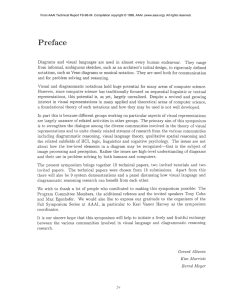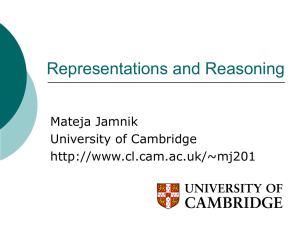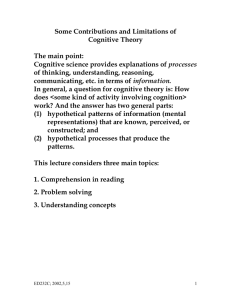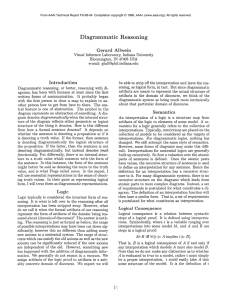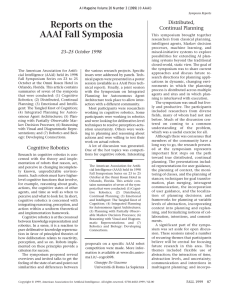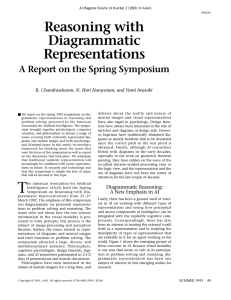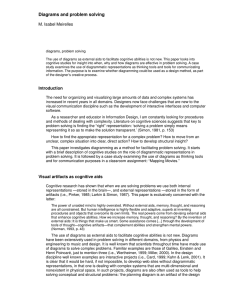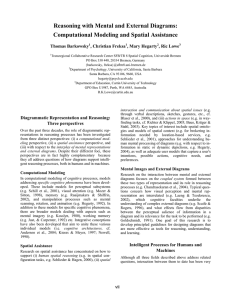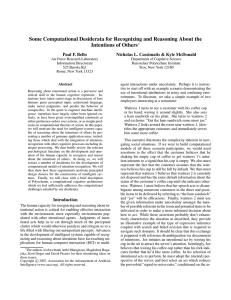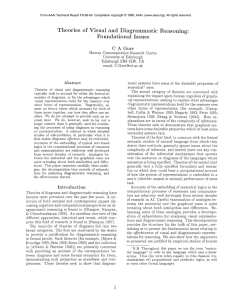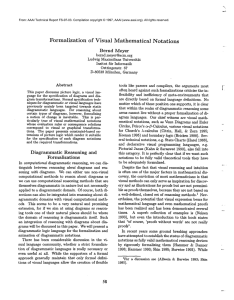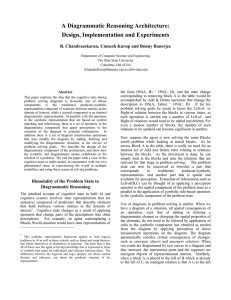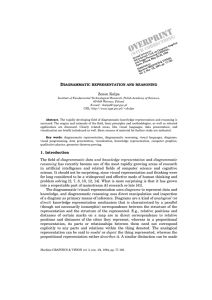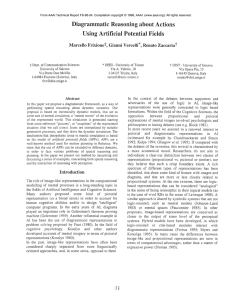Preface
advertisement
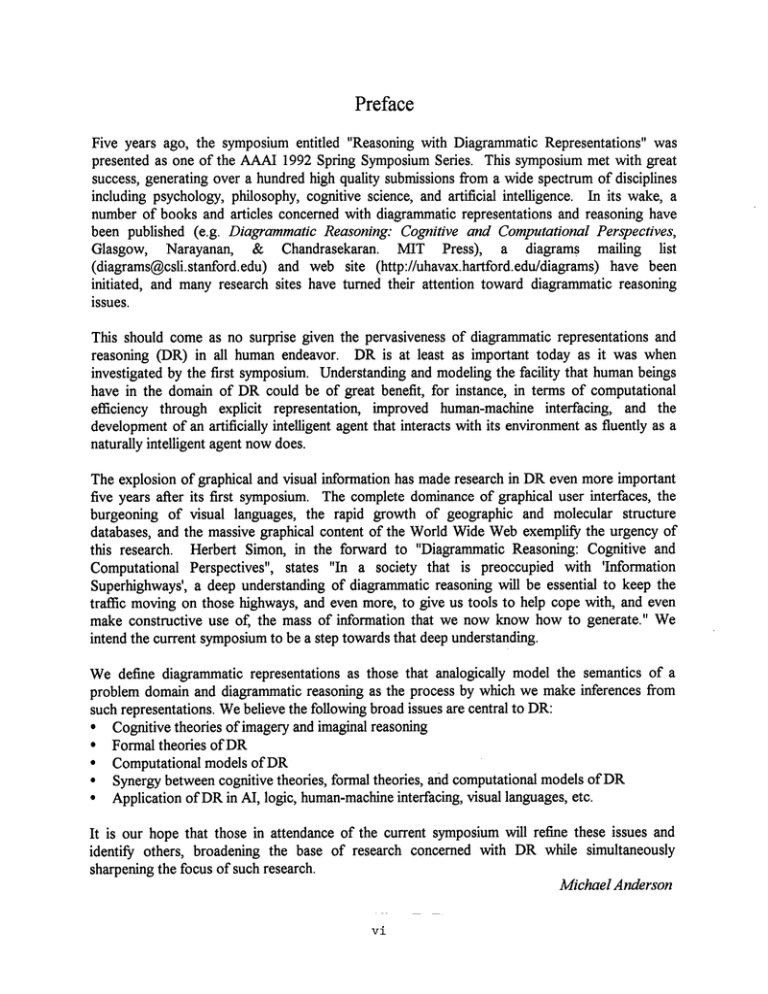
Preface Five years ago, the symposiumentitled "Reasoning with DiagrammaticRepresentations" was presented as one of the AAAI1992 Spring SymposiumSeries. This symposiummet with great success, generating over a hundredhigh quality submissions from a wide spectrumof disciplines including psychology, philosophy, cognitive science, and artificial intelligence. In its wake, a numberof books and articles concerned with diagrammatic representations and reasoning have been published (e.g. Diagrammatic Reasoning: Cognitive and Computational Perspectives, Glasgow, Narayanart, & Chandrasekaran. MIT Press), a diagrams mziling list (diagrams@csli.stanford.edu) and web site (http://uhavax.hartford.eduldiagrams) have initiated, and manyresearch sites have turned their attention toward diagrammaticreasoning issues. This should comeas no surprise given the pervasiveness of diagrammatic representations and reasoning (DR) in all humanendeavor. DRis at least as important today as it was when investigated by the first symposium.Understandingand modelingthe facility that humanbeings have in the domainof DRcould be of great benefit, for instance, in terms of computational efficiency through explicit representation, improved human-machineinterfacing, and the development of an artificially intelligent agent that interacts with its environmentas fluently as a naturally intelligent agent nowdoes. The explosion of graphical and visual information has maderesearch in DReven moreimportant five years alter its first symposium.The complete dominanceof graphical user interfaces, the burgeoning of visual languages, the rapid growth of geographic and molecular structure databases, and the massive graphical content of the WorldWideWebexemplify the urgency of this research. Herbert Simon, in the forward to "Diagrammatic Reasoning: Cognitive and Computational Perspectives", states "In a society that is preoccupied with ’Information Superhighways’,a deep understanding of diagrammaticreasoning will be essential to keep the traffic movingon those highways, and even more, to give us tools to help cope with, and even make constructive use of, the mass of information that we now knowhowto generate." We intend the current symposium to be a step towards that deep understanding. Wedefine diagrammatic representations as those that analogically model the semantics of a problem domain and diagrammatic reasoning as the process by which we makeinferences from such representations. Webelieve the followingbroad issues are central to DR: ¯ Cognitive theories of imageryand imaginal reasoning ¯ Formal theories of DR ¯ Computational models of DR ¯ Synergybetweencognitive theories, formal theories, and computational modelsof DR ¯ Applicationof DRin AI, logic, human-machine interfacing, visual languages, etc. It is our hope that those in attendance of the current symposiumwill refine these issues and identify others, broadening the base of research concerned with DRwhile simultaneously sharpeningthe focus of such research. Michael Anderson v±
